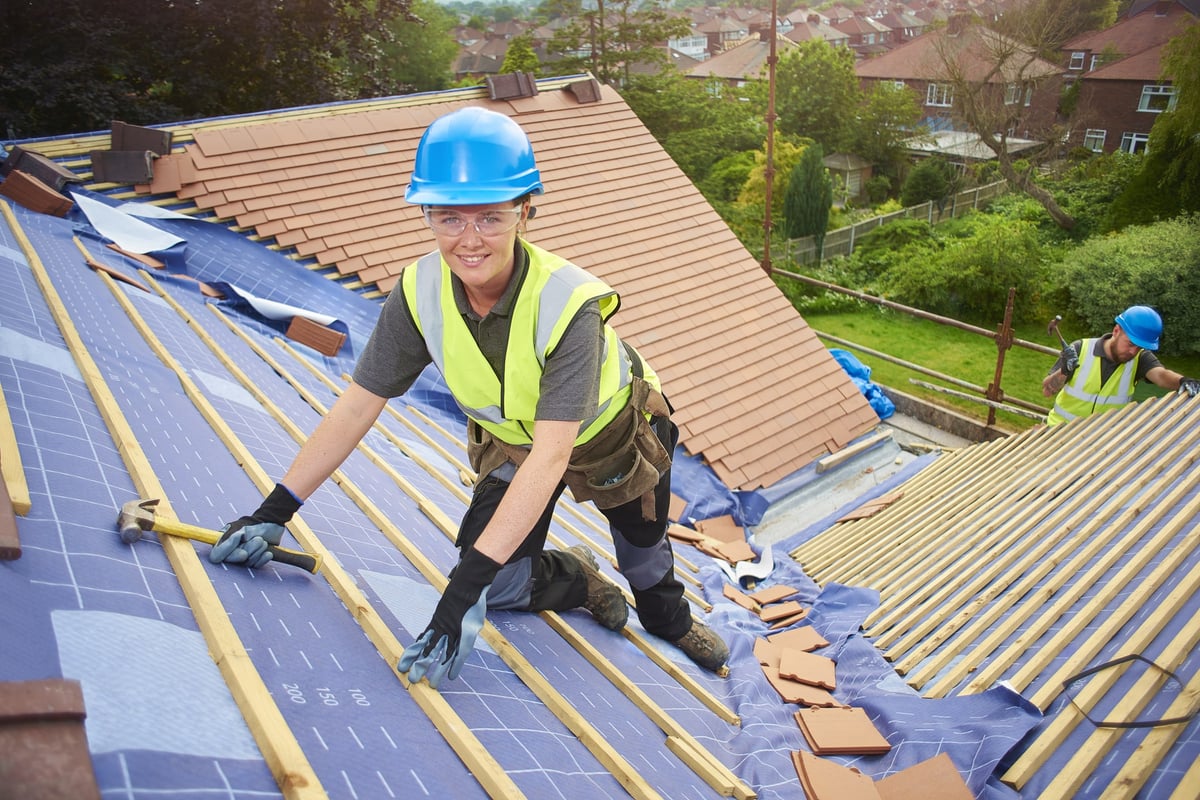Choose a recommended Roofer to ensure sturdy roofing solutions.
Choose a recommended Roofer to ensure sturdy roofing solutions.
Blog Article
Exactly How to Assess Different Roof Choices for Your Structure Requirements
Reviewing roofing options for your building requires a detailed approach that thinks about different aspects such as the planned use the framework, local climate problems, and product qualities. It is vital to weigh the benefits and downsides of various roof covering types, from asphalt roof shingles to metal and clay floor tiles, while also factoring in first costs and lasting upkeep. In addition, understanding power performance and aesthetic appeal can affect your choice. As you consider these considerations, one concern continues to be: which variables will eventually direct your selection for a lasting and visually pleasing roof service?
Examining Your Building's Demands
To efficiently examine roof choices, begin by completely assessing your structure's demands. Beginning by thinking about the structure's meant use, as various frameworks might demand varying roof requirements. For circumstances, domestic roof coverings usually focus on aesthetics and insulation, while industrial structures might concentrate on sturdiness and load-bearing ability.
Next, assess the local environment problems that will impact roof covering performance. Aspects such as temperature changes, rainfall degrees, and wind patterns can influence product option and style. A roof that excels in a pleasant climate may not do as well in locations susceptible to hefty snowfall or extreme heat.
In addition, examine the architectural stability of your structure. Make sure that the existing framework can sustain the picked roofing products, particularly if considering much heavier alternatives. It is likewise essential to assess any type of neighborhood building regulations or policies that may dictate details demands for roofing systems.

Comparing Roofing Materials
Once a comprehensive evaluation of your building's requirements has actually been completed, the next step involves contrasting different roof covering materials. Each product supplies distinct advantages and downsides, making it vital to straighten your choice with your particular demands and circumstances.
Asphalt tiles are commonly recognized for their affordability and convenience of installment, making them a prominent option for household structures. On the various other hand, metal roofing, known for its toughness and durability, can stand up to severe climate condition yet may come with a greater first investment.
Clay and concrete tiles give outstanding thermal insulation and aesthetic allure, specifically for Mediterranean-style architecture, yet they need a more durable structural assistance as a result of their weight. Timber trembles deal a natural appearance and great insulation properties yet might demand more upkeep and are susceptible to fire dangers.
Reviewing Cost and Spending Plan
Evaluating your roofing options necessitates a careful assessment of expense and spending plan considerations. The general spending plan for a roof task makes up a number of factors, including material prices, labor costs, maintenance, and prospective long-term savings. It is essential to develop a clear budget before discovering specific roofing products, as this will direct the decision-making process and assist you avoid overspending.
Begin by getting quotes from several specialists to comprehend labor prices in your area. Ensure that these estimates include all required services, such as removal of the old roofing system, setup, and any kind of added functions, like insulation or air flow enhancements - Toledo Roofer. Next, evaluate the price of different roof products, thinking about both initial installment prices and anticipated lifespan

Comprehending Energy Effectiveness
Power effectiveness plays an important function in the selection of roof materials and systems, significantly influencing both energy usage and total convenience within a building. A well-chosen roofing system can improve thermal efficiency, lowering the need for heating and cooling Visit Website systems, which click this consequently decreases energy bills and reduces environmental influence.
When evaluating roof alternatives, consider products that show instead than absorb warm. In addition, appropriate insulation and air flow are essential to enhance the power performance of the entire roof system.
An additional important factor is the roof covering system's longevity and maintenance requirements. Sturdy products that need less constant substitute add to lasting power savings. In addition, the energy performance of a roof system can also be assessed via its compliance with recognized sustainability ratings such as ENERGY CELEBRITY or LEED.
Taking Into Consideration Visual Allure
A roof covering's aesthetic allure considerably affects the overall look of a building, complementing its architectural design and improving aesthetic appeal. Toledo Roofer. When reviewing roofing options, it is important to consider exactly how the chosen material, shade, and layout will balance with the existing framework and neighborhood. A well-designed roofing can boost even the easiest of structures, changing them into aesthetic focal points
Different roofing materials provide different visual qualities. Conventional roof shingles might stimulate a traditional beauty, while steel roof can give a modern, smooth look. Additionally, the shade of the roof material plays an important role; lighter shades can make a building show up even more large, while darker tones might produce a cozier atmosphere.
In addition, architectural aspects, such as dormers and eaves, can improve the roof visit this website covering's visual influence. It is suggested to talk to professional designers or engineers to make sure the chosen roof choice lines up with the overall layout intent. Eventually, a roof covering must not only provide useful advantages however also add favorably to the building's aesthetic, showing the proprietor's taste and the character of the surrounding environment.
Conclusion

Report this page